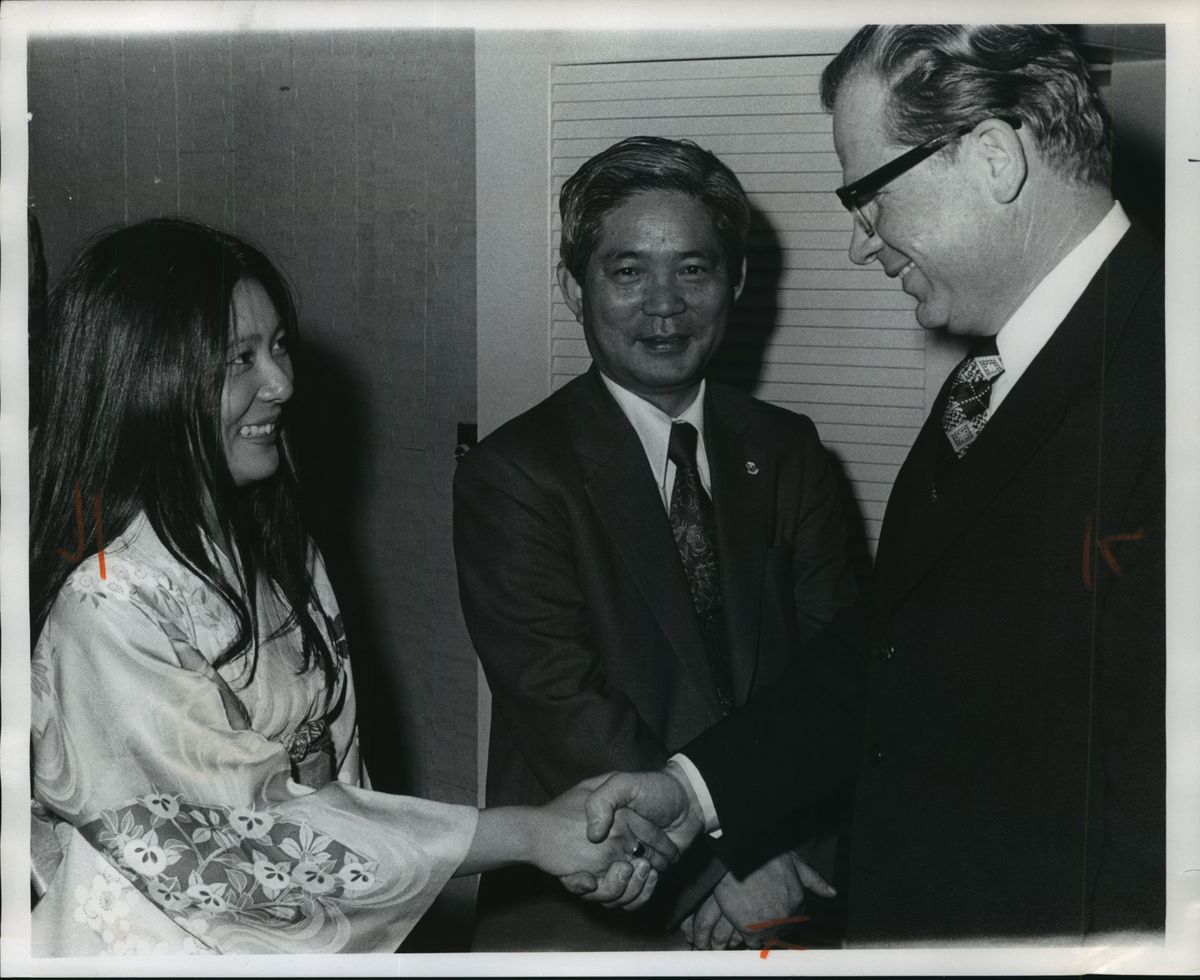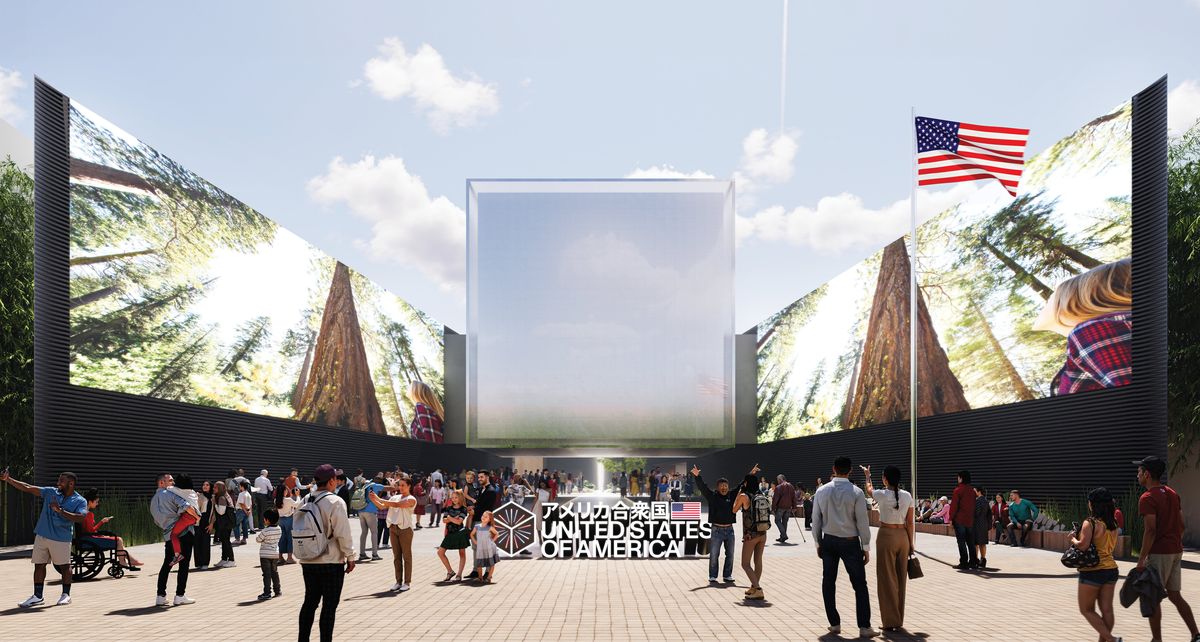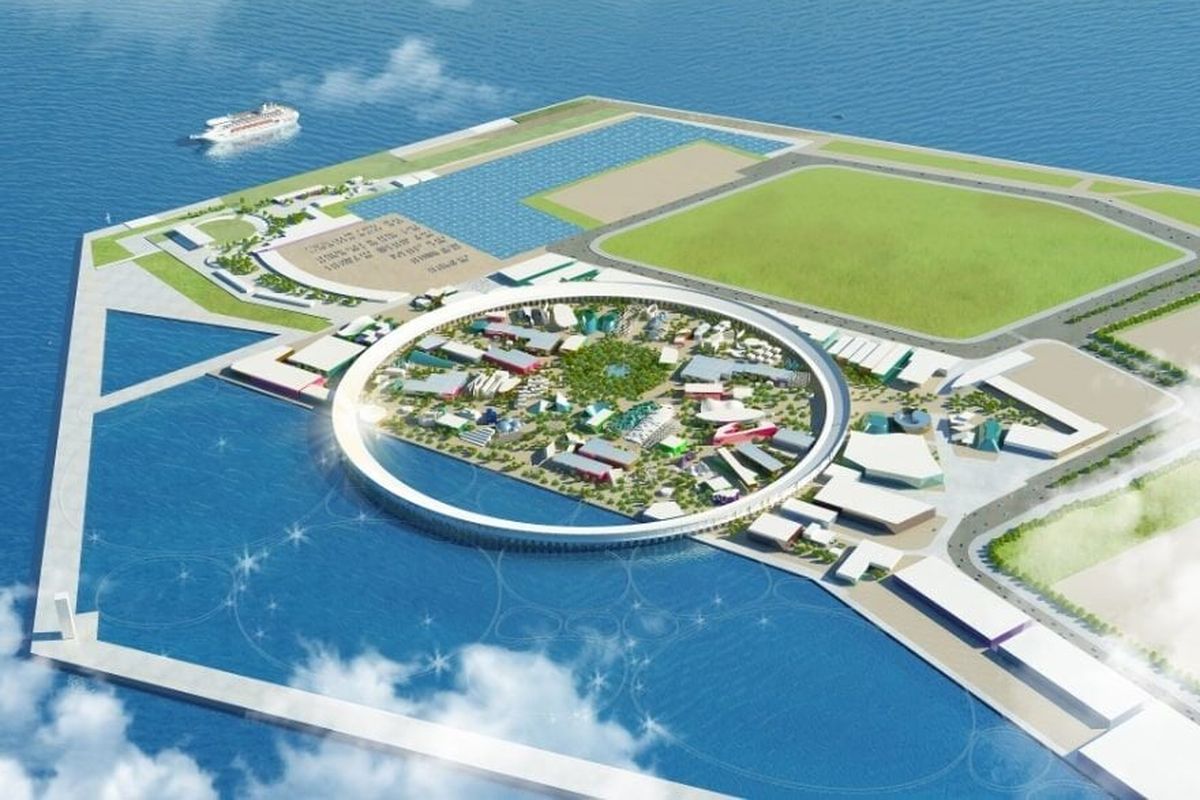Are Expos still a thing? Next up: Osaka 2025
An architect’s rendering shows the design for the USA Pavilion at Expo 2025 in Osaka, Japan. LED screens will create an immersive experience showcasing America’s scenic beauty. (Trahan Architects)
As Expo ’74 50th Anniversary official celebrations wrap up this week, some are looking forward to the next world’s fair, coming to Osaka, Japan, in 2025.
After seeing how deeply Expo ’74 affected Spokane, Mits Nakamura, vice president of the Spokane-Nishinomiya Sister City Society, said he’s curious to compare it to Osaka.
Nishinomiya is a suburb of Osaka in the Kansai region of south-central Japan.
As the international business manager for Hotstart, an engine heater manufacturer in Spokane Valley, Nakamura often travels to the company’s office in Tokyo. Such a business trip would be a perfect chance to steal away to Japan’s third-largest city.
“It would be nice if many people from Spokane go to Expo in Osaka,” Nakamura said.
Expo 2025 will host 161 countries and regions from April 13 to Oct. 13 with the theme “Designing Future Society for Our Lives.” The 155-hectare grounds are under construction on Yumeshima, an artificial island in Osaka Bay.
Expos are often known for distinctive landmarks they leave behind. The Eiffel Tower. The Space Needle. The U.S. Pavilion in Riverfront Park.
In Osaka, a huge wooden building called the Grand Ring will encircle most of the pavilions. With a small sliver extending into the sea, the 2-kilometer-circumference centerpiece will cover a promenade directing foot traffic around the grounds while another walkway above the roof will offer panoramic views of the fair.
Meanwhile, the Expo Unit of the U.S. State Department is planning the USA Pavilion. New Orleans architect Trey Trahan designed the minimalist high-tech exhibit composed of two triangular buildings covered with LED screens pointing toward a suspended illuminated cube.
The screens will showcase America’s natural beauty and cityscapes in an immersive experience welcoming attendees to explore the USA.
Following the pavilion’s theme of “Imagine What We Can Create Together,” the exhibit “invites visitors to envision a future that advances the very best of humanity,” Trahan said when unveiling the design earlier this year.
Inside, a stage will host performances, a restaurant will serve regional cuisine and a courtyard garden will grow plants native to the United States.
Expos are opportunities to showcase American values, enterprise, culture and global leadership, and to work with international partners to tackle global challenges, according to the State Department.
Organizers expect 28 million visitors next year.
This won’t be the first time for Osaka to host an Expo. Fumi Tsukahara, who was a hostess for the Japan Pavilion at Expo ’74, also attended Expo ’70 in Osaka as a teenager.
“That was a time of big change for Japan,” Tsukahara said. “It opened up more to the international community.”
When Tsukahara graduated from university in March 1974, she was looking for a good reason to leave her parents’ home in Tokyo.
She had been a high school exchange student in Philadelphia, so she was familiar with American culture and her English was good. She visited a government office to ask if she could work at the Expo in the United States, but they said they were only hiring Japanese residents already living there.
So she paid her own way and ended up staying with Ed Tsutakawa, founder of Spokane’s Sister City relationship with Nishinomiya and whose Japanese garden debuted in Manito Park in 1974.
As a hostess, Tsukahara greeted visitors to the pavilion, guided them through scenic posters of Buddhist temples and Mt. Fuji, and answered questions about Japanese culture. She also remembers presenting talks at social studies classes around town.
“I learned more about Japan that way,” she said.
She stayed in Spokane for the six months of the fair, then extended her stay on a student visa while taking classes at Eastern Washington University.
Tsukahara returned to Spokane in May for the opening ceremony of the 50th anniversary. She stood next to Spokane Mayor Lisa Brown for the ribbon cutting, wearing the same kimono she wore during Expo ’74.
Her grandmother wore that kimono when she served as an interpreter for the former Empress of Japan, Tsukahara said. She still wears it on special occasions.
The United States hasn’t hosted an Expo since New Orleans in 1984, perhaps replaced in the popular imagination by the Olympics. But they remain popular overseas.
The first Expo was The Great Exhibition held in London in 1851. Over time, what started as a means of showing off industrial innovation shifted to focus on cultural exchange and national branding.
Based in Paris, the Bureau International des Expositions has supervised the events held every few years since 1928.
World Expos focus on universal themes while smaller-scale Specialized Expos respond to a precise challenge facing humanity. Expo ’74 was the first Specialized Expo focused on the environment.
Horticultural Expos are another category that focus on gardening an agriculture. Yokohama, Japan, will host the next one in 2027.
Like the Olympics, Expos have a competitive application process for host countries and cities often face criticism for expensive investments.
The United States last year lost its second consecutive bid to host a Specialised Expo in Minnesota. Instead, it was awarded to Belgrade, Serbia, for 2027. The next World Expo is Expo 2030 in Riyadh, Saudi Arabia.
After that, the next opportunity to host will be 2032 or 2033.




